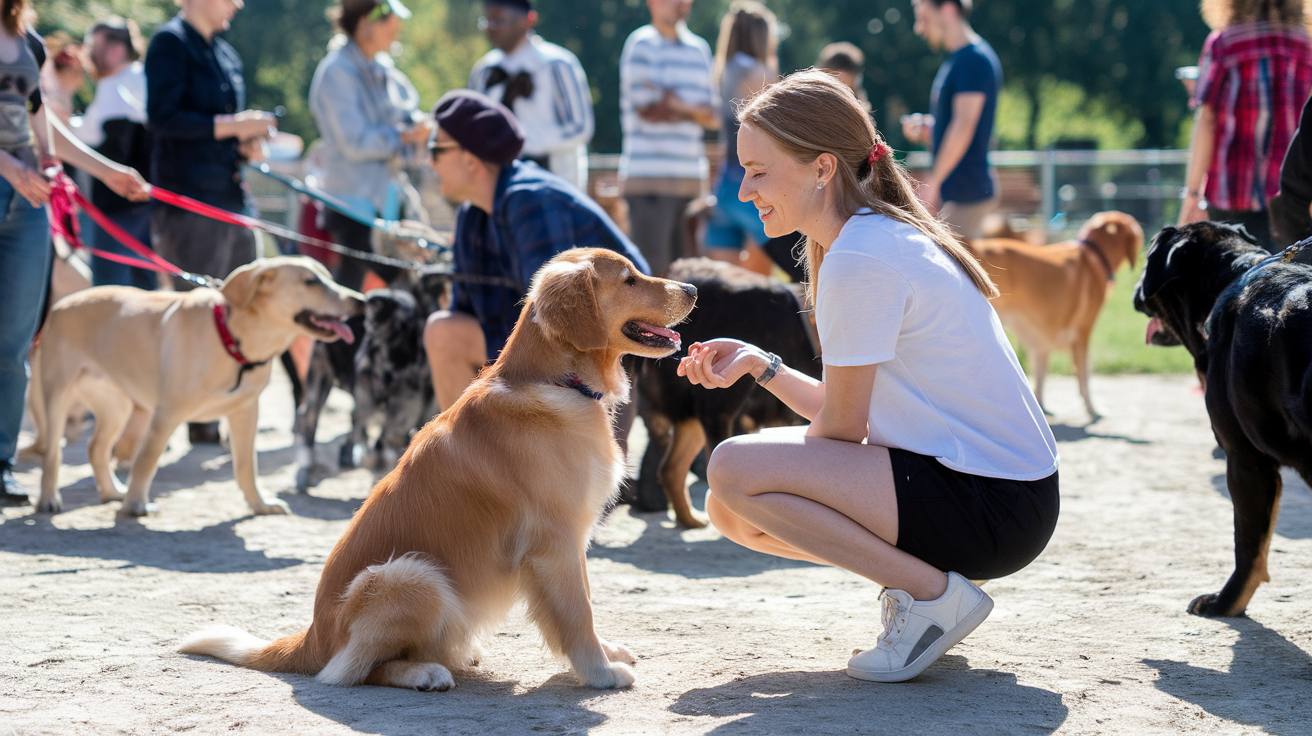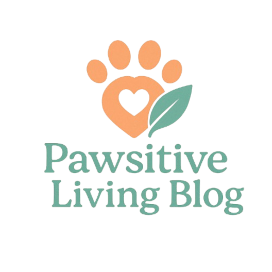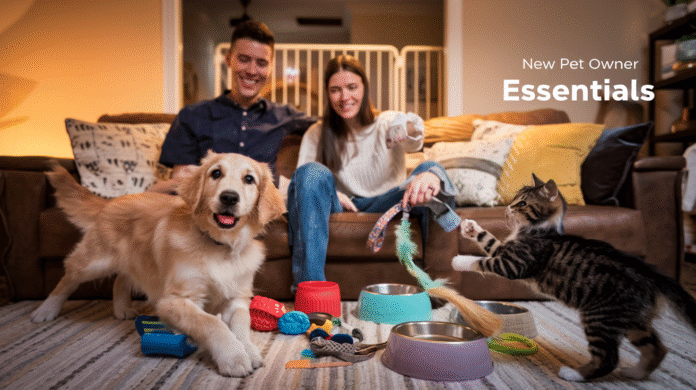
Are you ready to welcome a furry friend into your life? 🐾 Bringing home a new dog or cat is an exciting adventure, but it can also be overwhelming for first-time pet owners. From puppy-proofing your home to choosing the right food, there’s a lot to consider before your new companion arrives.
Don’t worry, though – we’ve got you covered! Our ultimate checklist for first-time dog or cat owners will guide you through everything you need to know to ensure a smooth transition for both you and your new pet. From essential supplies to training tips, we’ll help you create a safe, comfortable, and loving environment for your four-legged family member.
In this comprehensive guide, we’ll walk you through eight crucial areas every new pet owner should master: preparing your home, gathering essential supplies, prioritizing health and wellness, mastering training and socialization, providing exercise and mental stimulation, understanding grooming essentials, planning nutrition and feeding, and implementing safety measures. Let’s embark on this exciting journey together and set you up for success in your new role as a pet parent! 🐶🐱
Prepare Your Home

A. Pet-proof your living space
Before bringing your new furry friend home, it’s crucial to ensure your living space is safe and secure. Start by identifying potential hazards:
- Loose wires and cables
- Toxic plants
- Small objects that could be swallowed
- Medications and cleaning supplies
Secure these items by:
- Using cord organizers for wires
- Removing or relocating toxic plants
- Storing small objects in closed containers
- Locking away medications and cleaning supplies
B. Set up designated areas
Create specific zones for your pet to eat, sleep, and play. This helps establish routines and boundaries:
| Area | Purpose | Essentials |
|---|---|---|
| Feeding | Meals and water | Food and water bowls, placemats |
| Sleeping | Rest and comfort | Bed or crate |
| Play | Exercise and entertainment | Toys, scratching posts (for cats) |
C. Choose appropriate bedding
Select comfortable bedding that suits your pet’s size and needs:
- For dogs: Consider orthopedic beds for larger breeds or seniors
- For cats: Provide cozy cat beds or window perches
D. Install safety gates if necessary
Safety gates can help:
- Restrict access to certain areas
- Prevent falls on stairs
- Keep pets away from dangerous zones
Choose gates that are sturdy and appropriate for your pet’s size. Remember to consider your pet’s climbing abilities, especially for cats.
Essential Supplies

A. Food and water bowls
When selecting food and water bowls for your new pet, consider durability, ease of cleaning, and size. Stainless steel bowls are an excellent choice as they’re dishwasher-safe and resistant to bacteria. For dogs, elevated bowls can promote better posture during meals.
B. High-quality pet food
Choosing the right food is crucial for your pet’s health. Consult with your veterinarian to determine the best diet based on your pet’s age, size, and specific needs. Here’s a comparison of different types of pet food:
| Type | Pros | Cons |
|---|---|---|
| Dry kibble | Convenient, helps clean teeth | Lower moisture content |
| Wet food | High moisture, palatable | More expensive, spoils quickly |
| Raw diet | Natural, high protein | Requires careful handling |
C. Collar and ID tag
A collar with an ID tag is essential for your pet’s safety. Choose a collar that fits comfortably and an ID tag with your contact information. For cats, consider a breakaway collar for safety.
D. Leash or harness
For dogs, select a sturdy leash and a comfortable harness or collar for walks. For cats, a harness can be useful for outdoor adventures. Some popular options include:
- Standard flat leash
- Retractable leash (use with caution)
- Front-clip harness
- Head halter
E. Litter box and litter (for cats)
Choose a litter box that’s large enough for your cat to move around comfortably. Consider covered boxes for privacy and odor control. When selecting litter, opt for a low-dust, unscented variety to start. You can experiment with different types to find what your cat prefers.
Now that we’ve covered the essential supplies, let’s move on to discussing the importance of health and wellness for your new pet.
Health and Wellness

Find a reputable veterinarian
Finding a trustworthy veterinarian is crucial for your new pet’s health. Start by asking for recommendations from local pet owners, animal shelters, or pet stores. Research online reviews and check the veterinarian’s credentials. Consider factors such as location, emergency services, and specialized care options.
Schedule initial check-up
Once you’ve chosen a veterinarian, schedule an initial check-up within the first week of bringing your new pet home. This visit allows the vet to:
- Assess your pet’s overall health
- Address any immediate concerns
- Establish a baseline for future visits
- Discuss a preventive care plan
Vaccinations and preventive care
Work with your veterinarian to create a vaccination schedule tailored to your pet’s needs. Common vaccinations include:
| Dogs | Cats |
|---|---|
| Rabies | Rabies |
| Distemper | Feline Distemper |
| Parvovirus | Feline Leukemia |
| Bordetella | Upper Respiratory Infections |
Don’t forget about preventive care measures such as:
- Flea and tick prevention
- Heartworm medication (for dogs)
- Regular deworming
Spaying or neutering
Discuss the benefits of spaying or neutering with your veterinarian. These procedures can:
- Prevent unwanted litters
- Reduce certain health risks
- Potentially improve behavior
Your vet can recommend the best age for the procedure based on your pet’s breed and individual needs. With these health and wellness measures in place, you’ll be well-prepared to ensure your new furry friend stays happy and healthy for years to come. Next, we’ll explore the importance of training and socialization for your new pet.
Training and Socialization

Basic obedience commands
Teaching your new pet basic obedience commands is crucial for their safety and your sanity. Start with these essential commands:
- Sit
- Stay
- Come
- Down
- Leave it
| Command | Purpose | Training Tip |
|---|---|---|
| Sit | Control | Use treats to lure nose up and back |
| Stay | Safety | Gradually increase distance and duration |
| Come | Recall | Always reward, never punish |
| Down | Calm | Lure with treat from nose to floor |
| Leave it | Safety | Start with low-value items |
Housebreaking techniques
Consistency is key when housebreaking your new pet. Establish a routine and stick to it:
- Take dogs out frequently, especially after meals and naps
- Use a designated litter area for cats
- Reward successful bathroom trips immediately
- Clean accidents thoroughly to remove odors
Positive reinforcement methods
Positive reinforcement is the most effective and humane way to train your pet. Use treats, praise, and toys to reward good behavior. Avoid punishment, as it can lead to fear and anxiety.
Socialization with people and other animals
Early socialization is crucial for developing a well-adjusted pet. Expose your new companion to various people, animals, and environments:
- Arrange playdates with friendly, vaccinated pets
- Visit pet-friendly stores and parks
- Invite friends and family over to meet your pet
- Enroll in puppy or kitten socialization classes
Remember, socialization should always be positive and supervised. With patience and consistency, your new pet will become a well-mannered member of the family.
Exercise and Mental Stimulation

Daily exercise routines
Establishing a consistent exercise routine is crucial for your new pet’s physical and mental well-being. For dogs, aim for at least 30 minutes to 2 hours of daily activity, depending on their breed and age. Cats also need regular exercise, typically 15-30 minutes per day.
| Pet Type | Recommended Daily Exercise |
|---|---|
| Dogs | 30 minutes – 2 hours |
| Cats | 15-30 minutes |
Activities for dogs:
- Walks or jogs
- Fetch
- Tug-of-war
- Swimming
Activities for cats:
- Laser pointer games
- Feather wand play
- Climbing trees or cat towers
- Chasing toys
Interactive toys and puzzles
Mental stimulation is just as important as physical exercise. Interactive toys and puzzles can keep your pet engaged and prevent boredom-related behaviors.
Popular interactive toys:
- Treat-dispensing balls
- Puzzle feeders
- Kong toys
- Snuffle mats
Playtime activities
Regular playtime strengthens the bond between you and your new pet while providing essential exercise and mental stimulation.
Fun playtime ideas:
- Hide-and-seek
- Obstacle courses
- Training sessions
- Scent games
Remember to tailor activities to your pet’s age, breed, and physical condition. As you explore these exercise and mental stimulation options, you’ll discover what your new furry friend enjoys most. Next, we’ll delve into grooming essentials to keep your pet looking and feeling their best.
Grooming Essentials

Brushes and combs
Selecting the right grooming tools is crucial for your pet’s coat health and comfort. Different breeds require specific brushes and combs:
- For dogs:
- Slicker brush: Ideal for long-haired breeds
- Bristle brush: Suitable for short-haired dogs
- Undercoat rake: Perfect for double-coated breeds
- For cats:
- Wide-toothed comb: Great for detangling
- Rubber brush: Excellent for short-haired cats
- Flea comb: Helps detect and remove fleas
| Pet Type | Coat Length | Recommended Tool |
|---|---|---|
| Dog | Long | Slicker brush |
| Dog | Short | Bristle brush |
| Cat | Long | Wide-toothed comb |
| Cat | Short | Rubber brush |
Nail clippers
Regular nail trimming is essential for both dogs and cats. Choose from:
- Scissor-style clippers
- Guillotine-style clippers
- Grinding tools (for dogs)
Shampoo and conditioner
Select pet-specific products that suit your pet’s skin and coat type. Avoid human shampoos as they can disrupt the pH balance of your pet’s skin.
Toothbrush and pet toothpaste
Dental hygiene is crucial for pets. Use:
- Finger toothbrushes for easy application
- Long-handled toothbrushes for thorough cleaning
- Pet-safe toothpaste (never use human toothpaste)
Regular grooming not only keeps your pet looking great but also strengthens your bond. Now that we’ve covered grooming essentials, let’s move on to another crucial aspect of pet care: nutrition and feeding.
Nutrition and Feeding

Establish a feeding schedule
Consistency is key when it comes to feeding your new furry friend. Establishing a regular feeding schedule helps regulate your pet’s digestion and prevents overfeeding. For puppies and kittens, start with 3-4 small meals per day, gradually transitioning to 2 meals for adult dogs and cats.
Choose age-appropriate food
Selecting the right food for your pet’s life stage is crucial for their growth and development. Here’s a quick guide:
| Age Group | Recommended Food Type |
|---|---|
| Puppies/Kittens | High-protein puppy/kitten formula |
| Adult Dogs/Cats | Balanced adult formula |
| Senior Pets | Senior-specific formula with joint support |
Always consult your veterinarian for personalized recommendations based on your pet’s breed and health needs.
Understand portion control
Proper portion control is essential to maintain a healthy weight for your pet. Factors influencing portion size include:
- Age
- Size
- Activity level
- Breed
Follow the feeding guidelines on the pet food packaging, but be prepared to adjust based on your pet’s individual needs and your vet’s advice.
Provide fresh water daily
• Clean and refill water bowls daily
• Use multiple water stations for larger homes
• Consider a pet water fountain to encourage drinking
• Monitor water intake, especially in hot weather
Now that we’ve covered nutrition and feeding, let’s move on to crucial safety measures to keep your new pet protected and secure in their new home.
Safety Measures

A. Microchipping
Microchipping is a crucial safety measure for new pet owners. This tiny chip, about the size of a grain of rice, is implanted under your pet’s skin and contains a unique identification number. Here’s why it’s essential:
- Permanent identification
- Increases chances of reuniting with lost pets
- Quick and painless procedure
- One-time cost with lifetime benefits
| Aspect | Details |
|---|---|
| Procedure | Quick injection, usually between shoulder blades |
| Cost | $25-$50 on average |
| Registration | Required after implantation |
| Updating | Owner must keep contact info current |
B. Emergency contact information
Create a comprehensive list of emergency contacts for your pet:
- Regular veterinarian
- 24-hour emergency vet clinic
- Local animal control
- Pet poison hotline
- Trusted pet sitter or boarding facility
Keep this information readily accessible, both at home and on your phone. Consider creating a pet emergency card to carry in your wallet.
C. Pet insurance options
Pet insurance can help manage unexpected veterinary costs. Compare different plans based on:
- Coverage types (accident-only, comprehensive)
- Deductibles and reimbursement rates
- Exclusions and waiting periods
- Annual or lifetime coverage limits
D. First aid kit for pets
Assemble a pet-specific first aid kit containing:
- Gauze pads and adhesive tape
- Scissors and tweezers
- Hydrogen peroxide (3%)
- Antibiotic ointment
- Digital thermometer
- Pet-safe pain relievers (as recommended by your vet)
E. Toxic plants and substances to avoid
Familiarize yourself with common household items toxic to pets:
| Toxic to Dogs | Toxic to Cats |
|---|---|
| Chocolate | Lilies |
| Grapes/Raisins | Onions/Garlic |
| Xylitol | Caffeine |
| Avocado | Alcohol |
Remove these items from your pet’s reach or eliminate them from your home entirely. Research pet-safe alternatives for houseplants and cleaning products to ensure a safe environment for your new companion.

Bringing a new dog or cat into your home is an exciting adventure, but it requires careful preparation and ongoing commitment. From pet-proofing your living space to selecting the right supplies, prioritizing health check-ups, and establishing routines for training, exercise, and grooming, there’s much to consider. Proper nutrition and safety measures are also crucial for your new companion’s well-being.
By following this comprehensive checklist, you’ll be well-equipped to provide a loving, safe, and enriching environment for your new furry friend. Remember, patience and consistency are key as you embark on this rewarding journey of pet ownership. With the right preparation and dedication, you’ll be on your way to building a strong, lasting bond with your new four-legged family member.



